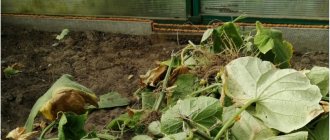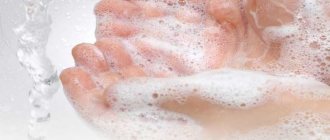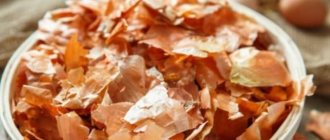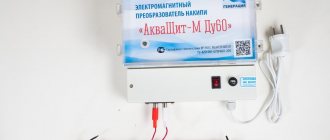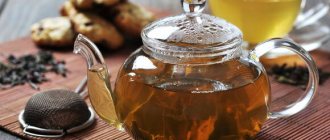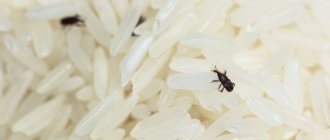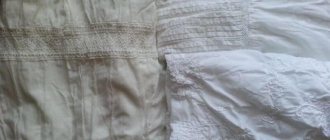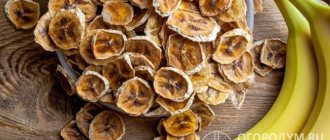Onion peel is one of the simple and safe ways to care for seedlings. You just need to cook it correctly. Our article will tell you how to do this, as well as what are the nuances of use.
Onion peels for feeding plants are one of the best ways to help them develop faster and be strong and healthy. In addition, the husk helps get rid of insects and fungal diseases. Vegetables grown using this fertilizer are absolutely safe to eat.
Benefits of onion peels for seedlings: advantages
Onion peels
Fertilizing with onion peels is effective for almost all crops grown in the garden. It is most beneficial for peppers, potatoes, cucumbers and tomatoes. After using it, crops grow better and also give a bountiful harvest. In addition, onion peels for seedlings can also be used for simple indoor flowers. It also strengthens them and allows them to grow better.
You can list many useful properties of this product, but the main ones are the following:
- First of all, husks are the best assistant in the fight against various types of fungi, as well as bacteria and rot. Using a decoction or infusion prevents harmful bacteria from developing and fungi from growing. The husk also disinfects the leaves.
- Improves the general condition of the root system. Therefore, the plant strengthens and develops. Onion peels prevent seedlings from rotting. It also prevents the early decay of chlorophyll, which takes part in photosynthesis.
- Plant immunity is supported. Its protective forces are activated, and it is able to actively resist adverse external factors. In addition, the husk helps convert nitrogen and sulfur, and also saturates plants with phosphorus.
Active substances
According to the recommendations of scientists, a person should eat 8-12 kg of onions per year. In practice, this figure in Russia, Ukraine and Belarus is much higher. Where does the cleaning go? At best, they are thrown on the compost heap. But the husk has a number of useful properties and contains substances that can be used as fertilizers, stimulants, and plant protection products.
| Active substance | Mechanism of action |
| Carotene |
|
| B vitamins |
|
| Vitamin C |
|
| Nicotinic acid (vitamin PP) |
|
| Phytoncides |
|
| Quercetin (a coloring pigment released by boiling) |
|
| Mineral salts | Micro- and macroelements essential for life |
Using decoction, infusion, onion peel extract for seedlings: instructions, recipes
Onion peels for seedlings are prepared in different ways. In this case, it is important to understand that varieties may differ, and their husks also contain different amounts of useful substances. So, the yellow husk contains the most of them. So it will be preferable for plants.
- Infusion
Take a liter jar and fill it with husks so that it fits tightly. Then fill it with water to the brim and leave it like that for two days. When the water is infused, strain it to remove all excess.
The infusion should absolutely not be used in its pure form. It is diluted in a ratio of 1:2. Also add one tablespoon of liquid soap. This will allow the drug to last longer. After this, you can start spraying or watering the plants.
If there is no time to infuse the solution and it is needed urgently, then tightly fill half a bucket of water with onion peels and fill with hot water. The temperature should be at least 70 degrees. After this, let it brew for 12-15 hours. At the end of the time, also strain the finished infusion. It does not need to be diluted, so immediately use it on plants.
- Decoction
To prepare the decoction, fill a three-liter jar with husks and fill with hot water. When everything is soaked, transfer the mixture to a saucepan and add another liter of water. It is recommended to take dishes in which you do not cook food, because then the walls will be difficult to wash.
Place the pan with the husks on the fire. Wait for the mixture to boil and leave it like that for 5-10 minutes. Strain the solution immediately after boiling.
When the broth has cooled, feel free to use it. However, you will have to dilute it. To do this, pour two liters of broth into a bucket and add another 8 liters of clean water.
Plants are watered from a watering can with a diffuser at the root. Expect that one young plant will need half a liter in the first weeks after planting. Later, the amount of solution is reduced by two to three times.
- Extract
This remedy is the easiest to prepare and requires vodka. By the way, you can also use homemade alcohol tinctures.
Take a 0.5 liter jar and fill it completely with peelings. After this, pour plenty of vodka. She must fill all the voids. After this, close the jar tightly and leave it for a week in a warm place. At this point your extract is ready. You can store it in the refrigerator. It retains its properties for up to six months.
If you want to improve the germination of seeds and also disinfect them, then the solution is prepared at the rate of one tablespoon per glass of water. The seeds are soaked in it or germinated between two layers of gauze or fabric.
If your goal is fertilizer, then add 50-60 ml of extract to a 10-liter bucket of water. Plants are watered from a watering can or sprayed.
It is recommended to prepare the extract in several stages. As soon as enough husks have accumulated for a half-liter jar, you can immediately prepare the extract.
How to collect onion peels for the garden
Usually, raw materials are harvested in the fall before sowing vegetables before winter. The bulbs are sorted and their scales are removed.
Peelings of yellow and red onions are suitable for fertilizer.
After collection, the husks are laid out to dry for several days in a warm place without drafts. Then the raw materials are poured into a cotton bag and put away in a cool place until spring.
Onion peels for seedlings to protect against pests and diseases: use, recipe
Preparing a decoction of onion peels
Onion peels for seedlings are often used as a remedy for pests and diseases. Thanks to its use, you can get rid of insects for a long time.
There are several effective recipes to combat pests:
- Pour one kilogram of husk with three liters of boiling water. The finished mixture cannot be used immediately. It takes her a day to brew. This product is very helpful in dealing with blackleg.
- Onions effectively fight against aphids and spider mites on plants. To do this, just add laundry soap to the solution.
- Plants can be processed. This allows them to increase their resistance to infections. The procedure is carried out five to six days after planting in the ground. This event also helps prevent the development of rot.
By the way, the solution not only helps fight pests and diseases. It can also act as a growth promoter and adaptogen.
The use of onion scales for plant diseases
If you see that zucchini, zucchini, and cucumber seedlings have yellowed leaves. Then take 4 handfuls of onion peels, add a bucket of water (10 l), and boil. Let him insist. Then dilute 2 liters of the prepared mixture with a bucket of warm water and pour over the cucumber seedlings. Also use the mixture on yellowed sprouts of the pumpkin family. In addition, you can use this composition to feed tomato sprouts.
Source of healing quercetin
With improper care: excessive soil moisture, watering with cold water, poor ventilation, too much nitrogen fertilizer, and even sudden temperature changes, you can see how the base of the stem of indoor flowers and garden plants darkens, and then they fall. This means that a fungus has grown on the sprouts. This disease is called "black leg". Onion scales also help in this situation. Fill the husk with water and let it settle. Treat diseased plants 3 times, maintaining an interval of 6 days between treatments.
Onion peels for feeding seedlings: recipe
To increase productivity, onion peels are also used for seedlings. There is a recipe for effective onion feeding. To prepare, you will need two to four liters of boiling water, as well as 600 grams of husks. The liquid must be settled. She needs 40-50 hours.
For each bush you will need 400 ml of infusion. Gradually the amount increases to one liter as the plant grows.
The effect of fertilizing is quite quick. After just a few days of use, the foliage will acquire a brighter and richer color.
Using onion peels for seedlings: tips and tricks
Many novice gardeners believe that onion peels for seedlings can be used as conveniently as possible. However, it is not. Often a concentrate is used without dilution, or a solution is used immediately after preparation. This is absolutely impossible to do. In the first case, you will give the plants too much, and in the second, you will ruin the plants with boiling water. Also, do not create an excess of nutrients by using the solution too often. It is enough to do this once a week. In addition, it is not recommended to use old infusion. It won't do any good.
Experienced gardeners give some tips on how to properly use onion peels for seedlings:
- It is best to take the skins of red onions. The fact is that it contains more quercetin. This means that the plants will be better protected
- When you plant seedlings of tomatoes and peppers, it is recommended to put a little humus and onion peels in each hole. This will allow the plants to receive constant nutrition
- To check the concentration of the infusion, try how it tastes. If you mixed everything correctly, it will be bitter.
- If you do not feel strong bitterness, it means that you have diluted the solution weakly.
- If you want to remove pests, then treat the leaves. It is recommended to do this on both sides
- It is important to use any decoction or infusion immediately or within a day at most. Further, the concentration of nutrients decreases
- Onion peels help preserve fruits from rotting. Place your harvest in it and it will stay fresh for a long time
- To get rid of insects in the area, sprinkle onions in different places in the garden
So, onion peels for seedlings are an excellent helper in the garden. It allows not only to ensure the growth of crops, but also to protect against diseases and pests. In addition, it is quite inexpensive.
Use for plants
As a fertilizer and protection against pests, the husk is suitable for all plants. She is absolutely harmless. What you shouldn’t do is fertilize or treat the berry garden after the fruits begin to swell or color - they may acquire a bitter taste and onion smell.
Feeding
Foliar feeding is most effective. Microelements contained in onion peels are better absorbed by plants through leaves and stems. When the solution is watered on the ground, beneficial substances reach the root system, and it better absorbs macroelements - nitrogen, phosphorus, potassium.
Foliar feeding of plants can be done once every 10-14 days.
When onion peels are used as mulch or placed in holes when planting potatoes or seedlings, it simultaneously acts as an insecticide and fertilizer.
From pests, diseases
Extracts from the peels obtained by peeling onions help cope with the following pests:
- aphids;
- spider mites (for greater effectiveness when preparing a decoction, you can add hot pepper to the onion peel);
- codling moth;
- Colorado potato beetle;
- kidney mite;
- thrips;
- cruciferous flea beetle.
